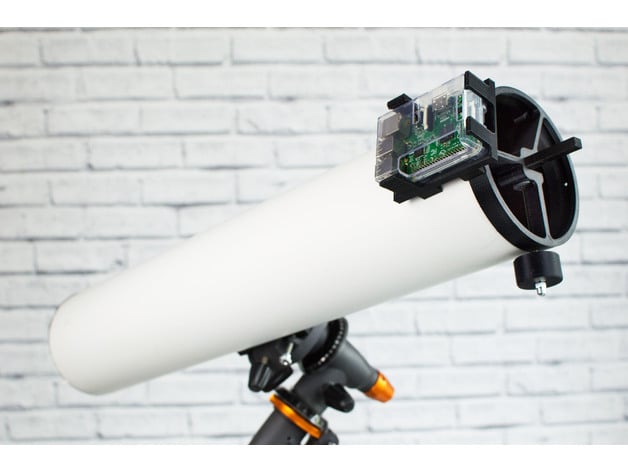
This week’s selection is the ambitious PiKon 3D printed telescope.
Can you really 3D print a working telescope? Not entirely, but this project certainly includes a large quantity of 3D printed parts. There are, however, a number of non-3D printed components you must separately obtain.
The PiKon is a project by Mark Wrigley of Sheffield, UK. Such a project is complex and should be designed by someone who knows what they are doing, and indeed Wrigley does, according to his Thingiverse profile:
Science and Technology activist. I am concerned with making science accessible to all. Fellow of the Institute of Physics and the Royal Astronomical Society.
The PiKon telescope is actually a simple 113mm diameter Newtonian telescope, in which light enters a tube and is captured by a large mirror at the bottom of the tube. Light is reflected back up the tube to a secondary mirror that shoots the image sideways to an eyepiece, or in the case of PiKon, a camera setup.
The 3D printed parts include the tube ends, one of which supports the mirror, tripod mount, a focusing knob and mounts and casing for the Raspberry Pi that is used to operate the imaging system.
Aside from the Pi, the non-3D printed components required include the mirror itself, an assortment of nuts, bolts and springs and the Raspberry Pi with camera and associated cables and cards.
The parts appear to be relatively straightforward to 3D print, and should be producible on almost any equipment. But this project’s challenge is not even in the assembly of the components, which is also straightforward.

No, the major effort required here is in the calibration and operation of the telescope. As you might imagine, bolting together the parts will certainly be terribly misaligned. No fear, though, as it is entirely possible to calibrate the telescope elements.
But then there will be another challenge: operating the camera. This telescope with Pi-powered camera system is intended to take astronomical photos. You’ll have to experiment with a number of different exposures to obtain decent results, and even then they may not be great. To obtain the best possible images you will have to resort to complex astrophotography data processing, where a series of images are intelligently combined to wring out the useful data from the noise.
Nevertheless, this project could be a great way to start your path into astrophotography through 3D printing.
The non-printed components may be obtained yourself, or you can short circuit the process by simply ordering them from PiKon, who have full kits available. In fact, you could even purchase a completely assembled PiKon telescope.
But then you wouldn’t get to 3D print the parts!
Via Thingiverse and PiKon

